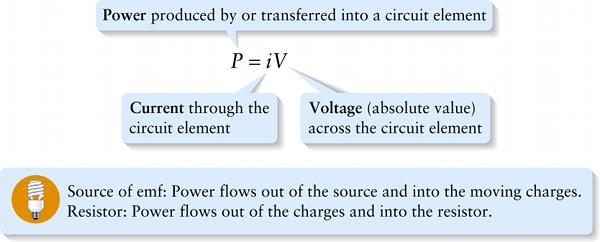Power for a circuit element (18-23)
Question 1 of 3
Question
Power produced by or transferred into a circuit element
{"title":"Power produced by or transferred into a circuit element","description":"Correct!","type":"correct","color":"#99CCFF","code":"[{\"shape\":\"poly\",\"coords\":\"82,133\"},{\"shape\":\"rect\",\"coords\":\"10,16,12,16\"},{\"shape\":\"poly\",\"coords\":\"144,22\"},{\"shape\":\"rect\",\"coords\":\"1,8,39,55\"}]"} {"title":"Voltage (absolute value) across the circuit element","description":"Wrong","type":"incorrect","color":"#ffcc00","code":"[{\"shape\":\"rect\",\"coords\":\"120,4,160,56\"}]"} {"title":"Current through the circuit element","description":"Incorrect","type":"incorrect","color":"#333300","code":"[{\"shape\":\"rect\",\"coords\":\"93,8,120,53\"}]"}Review
Equation 18-23 applies to any circuit element: The amount of power that flows into or out of a circuit element is equal to the product of the current through the element multiplied by the voltage across the element. For a given voltage V, each small amount of charge Δq that traverses the circuit element transfers the same amount of energy into or out of the element; the more charge that traverses the element per unit time and so the greater the current i, the greater the rate of energy transfer P.

